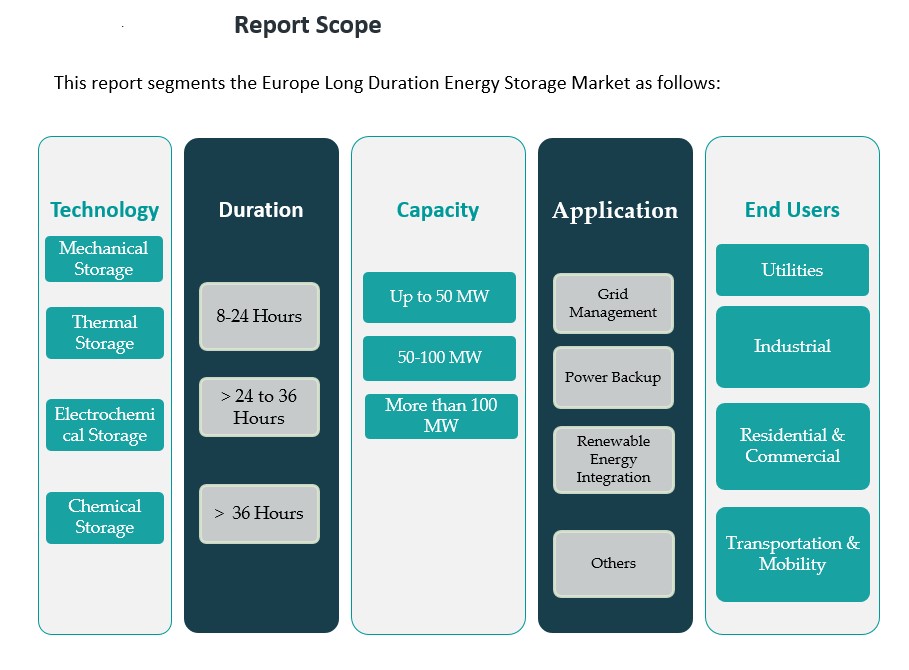Our first step into long-duration energy storage with Energy Dome – The Keyword

Advancing Sustainable Development Goals Through Strategic Investment in Long-Duration Energy Storage
A new strategic partnership has been formed to accelerate the deployment of Long-Duration Energy Storage (LDES) technology, directly contributing to the achievement of several key United Nations Sustainable Development Goals (SDGs). This initiative focuses on deploying a novel CO2 Battery technology developed by Energy Dome to support the global transition to 24/7 carbon-free energy.
Strategic Alignment with Global Sustainability Objectives
The collaboration represents a significant step towards realizing a future where electricity grids are powered entirely by clean energy sources. This aligns with a broader corporate strategy to invest in a diverse portfolio of advanced clean energy technologies, including enhanced geothermal, advanced nuclear, and fusion.
Fostering SDG 7: Affordable and Clean Energy
The primary objective of this partnership is to advance SDG 7 by ensuring universal access to affordable, reliable, and modern energy services. The LDES technology addresses a critical challenge in renewable energy:
- Bridging Intermittency: The CO2 Battery can store excess renewable energy and dispatch it for 8-24 hours, closing the gap between when clean energy is generated and when it is needed.
- Enhancing Grid Reliability: By providing a stable, on-demand source of clean power, the technology strengthens grid resilience, which is essential for integrating higher volumes of variable renewable sources like solar and wind.
- Accelerating Carbon-Free Goals: The deployment of this technology is a critical component in achieving a 24/7 carbon-free energy supply before 2030.
Driving SDG 9: Industry, Innovation, and Infrastructure
This initiative is a direct investment in sustainable infrastructure and cutting-edge industrial innovation, central tenets of SDG 9.
- Technological Innovation: The partnership supports a first-of-its-kind CO2 Battery that uses a closed-loop thermodynamic process. Energy is stored by compressing CO2 into a liquid and is discharged by expanding the liquid back into a gas to power a turbine. This promotes scientific research and upgrades technological capabilities.
- Resilient Infrastructure: LDES is vital for building reliable and flexible power systems. Studies indicate that deploying up to 8 terawatts of LDES by 2040 could yield $540 billion in annual savings globally by optimizing grid performance.
- Sustainable Industrialization: By making clean energy more reliable, the technology enables industries to transition away from fossil fuels, supporting the upgrade of infrastructure and retrofitting of industries to make them sustainable.
Mechanism and Scalability for Global Impact
The Energy Dome CO2 Battery has demonstrated commercial viability with projects in Italy, the US, and India. The technology’s success in injecting power into the Italian grid from a commercial demonstration facility underscores its readiness for wider deployment.
Contribution to SDG 13: Climate Action
By facilitating a stable supply of clean energy, this LDES technology is a crucial tool for climate action. It directly reduces the need for fossil fuel power plants to manage peak electricity demand, thereby mitigating greenhouse gas emissions and combating climate change.
Emphasizing SDG 17: Partnerships for the Goals
The collaboration between a technology leader and an energy innovator exemplifies the multi-stakeholder partnerships required by SDG 17. The model includes:
- Commercial Agreements: Supporting multiple global projects to catalyze market adoption.
- Direct Investment: Providing capital to help scale the technology faster and reduce costs.
- Policy Advocacy: Advocating for policies that value firm, carbon-free technologies and enable the infrastructure essential for grid decarbonization and energy security.
This partnership aims to unlock the full potential of LDES, strengthening grid resilience and supporting sustainable economic growth while ensuring communities have access to reliable, 24/7 clean energy, thereby making a substantial contribution to the 2030 Agenda for Sustainable Development.
1. Which SDGs are addressed or connected to the issues highlighted in the article?
-
SDG 7: Affordable and Clean Energy
The article’s central theme is the advancement and deployment of clean energy technologies to ensure a constant supply of carbon-free electricity. It explicitly discusses moving towards a “24/7 carbon-free energy goal” by using technologies like enhanced geothermal, advanced nuclear, and long-duration energy storage (LDES) to make “reliable, affordable electricity available around the clock.” This directly aligns with the goal of ensuring access to affordable, reliable, sustainable, and modern energy for all.
-
SDG 9: Industry, Innovation, and Infrastructure
The article highlights innovation in the energy sector through the partnership with Energy Dome and its “novel CO2 Battery.” It focuses on bringing a “first-of-a-kind LDES technology to market faster” and investing in “advanced clean energy technologies.” Furthermore, it addresses the need for resilient infrastructure by discussing how LDES can support “the resilience of grids as they integrate growing amounts of renewable energy sources” and advocating for “infrastructure essential for grid decarbonization.”
-
SDG 13: Climate Action
The entire initiative described in the article is a direct form of climate action. The primary motivation is to achieve “24/7 carbon-free energy” and “grid decarbonization.” By developing and deploying technologies that store renewable energy, the goal is to “reduce the need to ramp up fossil fuel power plants,” thereby combating climate change by mitigating greenhouse gas emissions from the power sector.
-
SDG 17: Partnerships for the Goals
The article is built around a “new long-term partnership with Energy Dome.” It exemplifies a multi-stakeholder partnership to achieve sustainability goals, mentioning a “commercial partnership, as well as an investment in the company.” It also references other collaborations with companies like Fervo and Kairos Power and broader efforts to advocate for policies, demonstrating a commitment to using partnerships to “catalyze wider market adoption” of clean technologies.
-
SDG 11: Sustainable Cities and Communities
The article connects its technological advancements to community benefits. By aiming to make “reliable, affordable electricity available around the clock” and strengthening “grid resilience,” the initiative supports the development of sustainable and resilient communities. The text states an aim to “rapidly bring its potential to communities everywhere,” ensuring that urban and other settlements have the stable, clean power necessary for modern life and economic growth.
2. What specific targets under those SDGs can be identified based on the article’s content?
-
SDG 7: Affordable and Clean Energy
- Target 7.2: By 2030, increase substantially the share of renewable energy in the global energy mix. The article directly supports this by discussing technologies that “store excess clean energy” and “integrate a growing volume of renewables onto power systems,” which is essential for increasing the share of intermittent renewable sources like solar and wind.
- Target 7.a: By 2030, enhance international cooperation to facilitate access to clean energy research and technology… and promote investment in energy infrastructure and clean energy technology. The article describes a partnership between Google and Energy Dome to deploy technology globally, with projects mentioned in Italy, the US, and India. It also details a direct “investment in the company” to “bring this technology to scale faster.”
-
SDG 9: Industry, Innovation, and Infrastructure
- Target 9.4: By 2030, upgrade infrastructure and retrofit industries to make them sustainable… and greater adoption of clean and environmentally sound technologies. The article focuses on deploying Energy Dome’s “novel approach to energy storage” to make power grids more sustainable and enable “grid decarbonization.” This is a clear example of adopting clean technology to upgrade critical infrastructure.
-
SDG 13: Climate Action
- Target 13.2: Integrate climate change measures into national policies, strategies and planning. The article mentions that Google is “advocating for clean energy policies” and “advancing policy measures that enable infrastructure essential for grid decarbonization,” which is a direct effort to integrate climate-friendly measures into energy policy and planning.
-
SDG 17: Partnerships for the Goals
- Target 17.17: Encourage and promote effective public, public-private and civil society partnerships. The “long-term collaboration with Energy Dome” is a prime example of a private-private partnership aimed at achieving a global sustainability goal. The article states the partnership’s goal is to “catalyze wider market adoption of more mature technologies.”
3. Are there any indicators mentioned or implied in the article that can be used to measure progress towards the identified targets?
-
For Target 7.2 (Increase renewable energy share):
An implied indicator is the duration and capacity of energy storage deployed. The article specifies that the CO2 Battery can “store excess clean energy and then dispatch it back to the grid for 8-24 hours” and mentions a “full-scale 20MW-200Wh commercial plant.” Measuring the total megawatt-hours of LDES deployed would indicate progress in enabling higher shares of renewables.
-
For Target 7.a (Promote investment in clean energy technology):
A direct indicator is the level of investment and number of commercial projects. The article mentions an “investment in the company” (Energy Dome) and a plan to “support multiple commercial projects globally.” Tracking the financial investment and the number of deployed projects in different countries (like the US, Italy, and India mentioned) serves as a clear progress indicator.
-
For Target 9.4 (Adoption of clean technologies):
An indicator is the scale of deployment of the new technology. The article mentions the LDES Council’s estimate of deploying “up to 8 terawatts (TW) of LDES by 2040.” Progress can be measured by the terawatts of LDES technology, like the CO2 Battery, that are successfully brought to market and integrated into grids.
-
For Target 13.2 (Integrate climate measures into policies):
An implied indicator is the number of supportive policies enacted. The article states that Google is “advocating for clean energy policies” and ensuring “energy markets fully value firm, flexible carbon-free technologies.” The successful adoption of such policies and market reforms would be a key indicator of progress.
-
For Target 17.17 (Promote partnerships):
A direct indicator is the number and scope of partnerships formed. The article is centered on the “new long-term partnership with Energy Dome” and mentions plans to “support a growing range of LDES technologies… through both commercial agreements.” The number of such agreements signed and executed is a direct measure of progress.
4. Create a table with three columns titled ‘SDGs, Targets and Indicators’ to present the findings from analyzing the article.
| SDGs | Targets | Indicators (Mentioned or Implied in the Article) |
|---|---|---|
| SDG 7: Affordable and Clean Energy | 7.2: Increase substantially the share of renewable energy.
7.a: Enhance international cooperation and investment in clean energy technology. |
Duration and capacity of energy storage (e.g., “8-24 hours,” “20MW-200Wh commercial plant”).
Financial investment in clean tech companies and number of global commercial projects (e.g., “investment in the company,” projects in “Italy, the US, and India”). |
| SDG 9: Industry, Innovation, and Infrastructure | 9.4: Upgrade infrastructure and adopt clean technologies. | Scale of new technology deployment (e.g., progress towards the LDES Council’s estimate of “8 terawatts (TW) of LDES by 2040”). |
| SDG 11: Sustainable Cities and Communities | 11.b: Increase the number of cities implementing policies for resilience. | Availability of reliable, clean power (e.g., achieving “reliable, affordable electricity available around the clock”). |
| SDG 13: Climate Action | 13.2: Integrate climate change measures into policies and planning. | Number of supportive policies enacted (e.g., success in “advocating for clean energy policies” and market reforms). |
| SDG 17: Partnerships for the Goals | 17.17: Encourage and promote effective public-private and civil society partnerships. | Number and scope of commercial partnerships formed (e.g., the “new long-term partnership with Energy Dome” and other “commercial agreements”). |
Source: blog.google

What is Your Reaction?
 Like
0
Like
0
 Dislike
0
Dislike
0
 Love
0
Love
0
 Funny
0
Funny
0
 Angry
0
Angry
0
 Sad
0
Sad
0
 Wow
0
Wow
0








































































